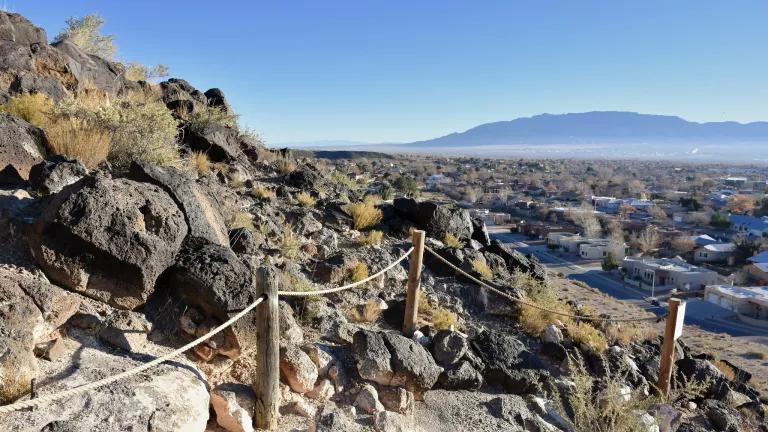Commission Approves $250 Million in Energy Efficiency Funding for Low-Income Households Following Aliso Canyon Leak

The California Public Utilities Commission has approved a huge funding increase in the deployment of energy efficiency measures to low-income households in the Los Angeles region, a move designed to help alleviate the potential risk of blackouts from the Aliso Canyon natural gas leak.
As a result of the commission’s action, Southern California Gas and Southern California Edison can now use nearly $250 million in previously unspent funds for measures that will cut bills and electricity and gas waste via the state’s Energy Savings Assistance Program (ESA). This is in addition to the utilities’ annual overall program budgets of about $88 million and $50 million respectively.
The decision also eases a few administrative rules, establishes the program’s first energy-savings goals, and clarifies that utilities can direct funding toward heating, hot water, and cooling systems in larger apartment buildings in the affected region.
ESA, available since the 1990s at no-cost to customers of California’s large investor-owned utilities who earn less than 200 percent of the federal poverty guidelines, or $31,460 for a household of two, serves millions of low-income California households with basic energy retrofits, such as efficient lighting and insulation, that save energy and cut utility bills while also improving the comfort and safety of residents’ homes and apartment units.
The Aliso Canyon gas leak lasted for almost four months earlier this year, and emitted nearly 100,000 tons of methane into the atmosphere—the largest methane leak in U.S. history. The gas storage facility is indefinitely closed, and California’s joint energy agencies recently projected up to 14 days of power shortages as a result. Natural gas is used in regional power plants that generate electricity for residents.
Decision Elevates Role of Energy Savings
Per recommendations by NRDC, California Housing Partnership, and the National Consumer Law Center, the commission’s decision adopts formal energy-savings goals for the first time in ESA’s history: 4 percent for electricity and 3 percent for gas on average across all treated households in the affected region for the emergency time period, currently slated until the end of 2017.
The commission also set a target to increase average energy savings in the affected region by 10 percent, compared to pre-emergency savings: the amount utilities had saved the prior year, under normal conditions.
To date, the commission has set strict goals requiring utilities to install efficiency measures in a minimum number of households per year—with a final goal of treating all low-income households by 2020. Without an associated energy-savings goal, this metric has resulted in expending significant resources to identify customers to enroll, only to install a couple measures per household. With the exception of SoCalGas, the private utilities’ plans for future years (those of Pacific Gas & Electric, San Diego Gas & Electric, and Southern California Edison) all have projected saving less energy than years past.
With the potential for blackouts this summer and new legislation mandating the doubling of statewide energy efficiency savings, the commission has now adopted specific energy savings targets in the LA region. While still relatively low compared to the available potential of between 15-30 percent, these goals provide a great start and new direction for the program.
After all, the less energy wasted per household, the more money residents save on utility bills and can put toward other expenses, such as food and medicine.
Serving Owners and Residents in Multi-family Buildings
Multi-family apartments comprise a significant portion of housing in the affected region, which includes the Los Angeles basin, Orange County, and Ventura County. In the city of Los Angeles alone, there are over 40,000 low-income residential buildings with five or more units that qualify for the ESA program.
The recent decision provides direction to utilities to provide meaningful efficiency measures to these buildings, including by intensifying offerings of “currently authorized common area measures that save energy.”
Centralized water heating is often one of the largest uses of energy in these buildings—but utilities have yet to direct any program funding to central systems even though the CPUC ruled in 2014 that utilities must do so. Since utilities have yet to implement this order, the commission has now re-ordered the utilities to address these large systems with huge potential for energy savings.
In addition, the commission’s Decision issued last week also encourages utilities to leverage program offerings outside of the ESA program portfolio that could also achieve energy savings. In the city of Los Angeles, alone, there are over 27 separate efficiency programs available to multifamily owners and tenants from Los Angeles Department of Water and Power, Southern California Gas Company, and federal and state weatherization programs, among others. Leveraging will be key.
More Can Be Done: Enabling Utilities to Deploy New and More Efficient Measures
Unfortunately, the decision remained silent as to whether utilities can deploy new measures that the commission has not explicitly approved. Yet, nearly all stakeholders recommended a host of new energy-savings measures that could be deployed, such as: LED lighting, advanced power strips, and heat pump water heaters.
Commission staff have authority to convene stakeholders to recommend new measures, as was noted at the commissioners’ meeting approving the decision. We hope the commission will not waste the opportunity to capture significantly more savings in the affected region by soliciting input on new measures and providing utilities with the flexibility to implement them.
Elevating the Role of Equity in Efficiency Investments
Low-income households spend more of their income on utility bills relative to average households in California. In Los Angeles. low-income households pay almost double the percentage of their income on energy relative to all households in the same area.
Potential power outages resulting from Aliso Canyon’s gas leak could add an additional burden. As Commissioner Sandoval noted, “I am deeply concerned that any electric curtailments will have a disproportionate impact on low-income communities.”
Thankfully, this decision directs relief to those residents.
| amaxwell@nrdc.org |



